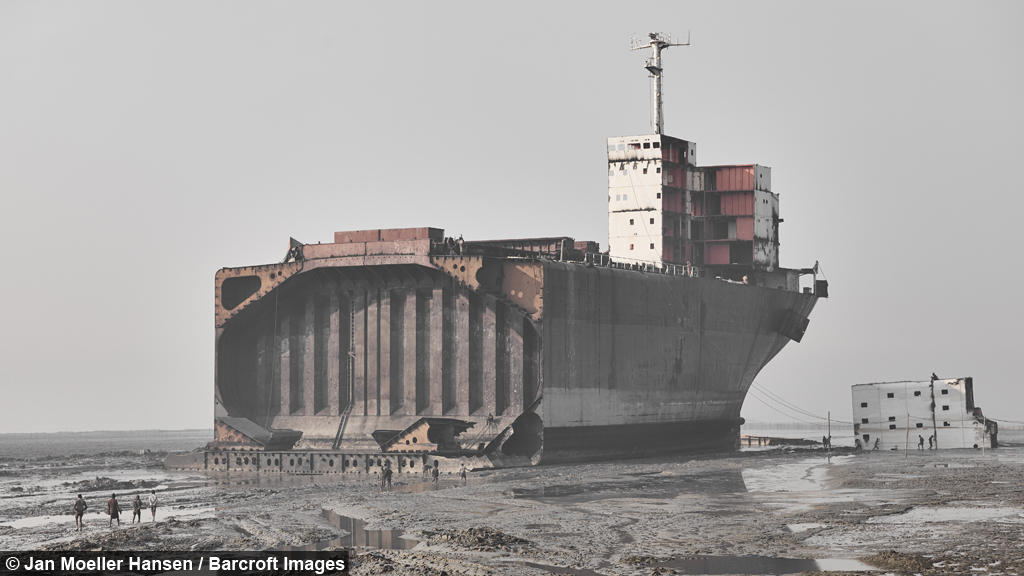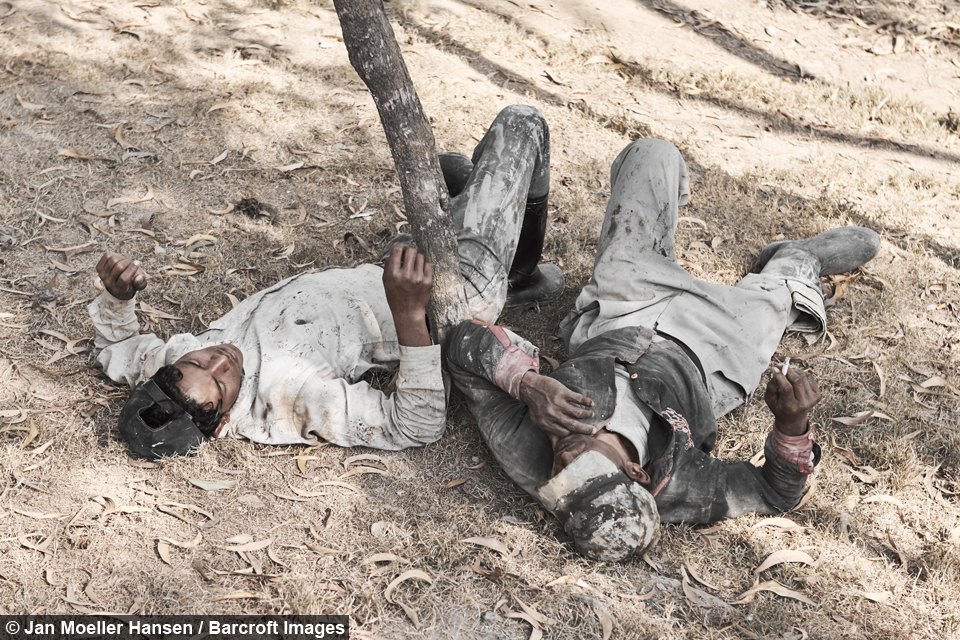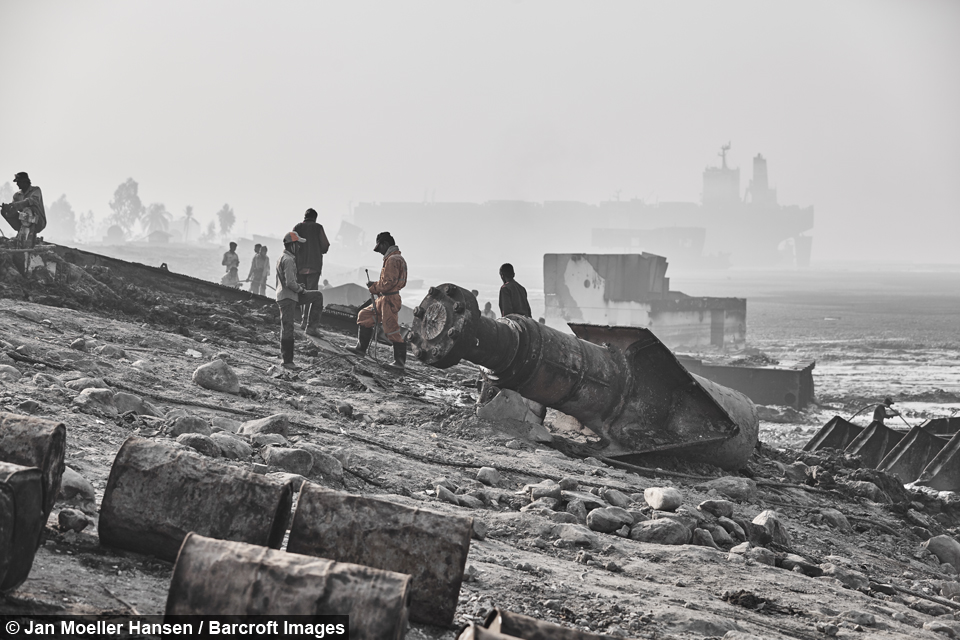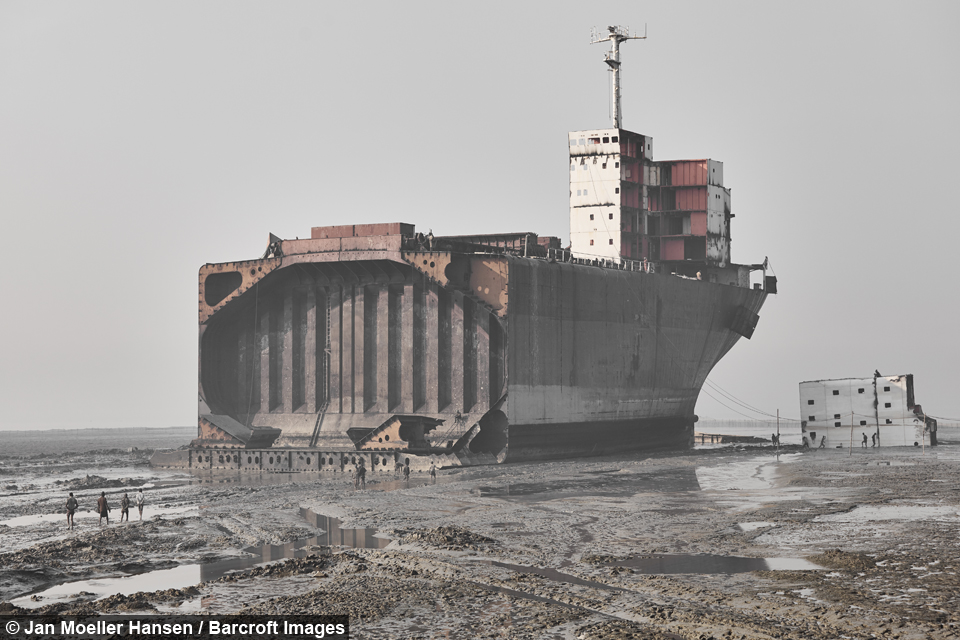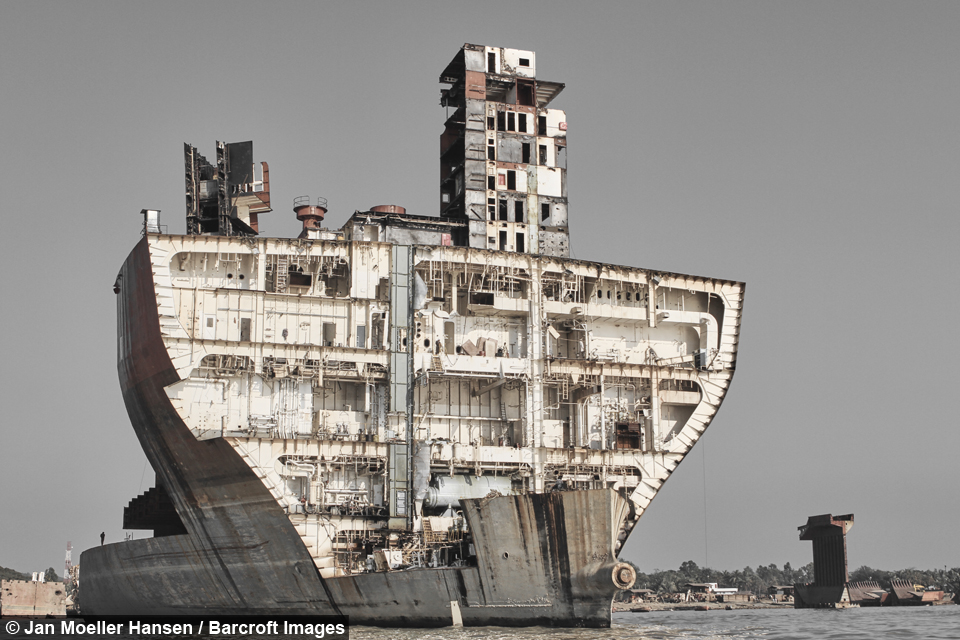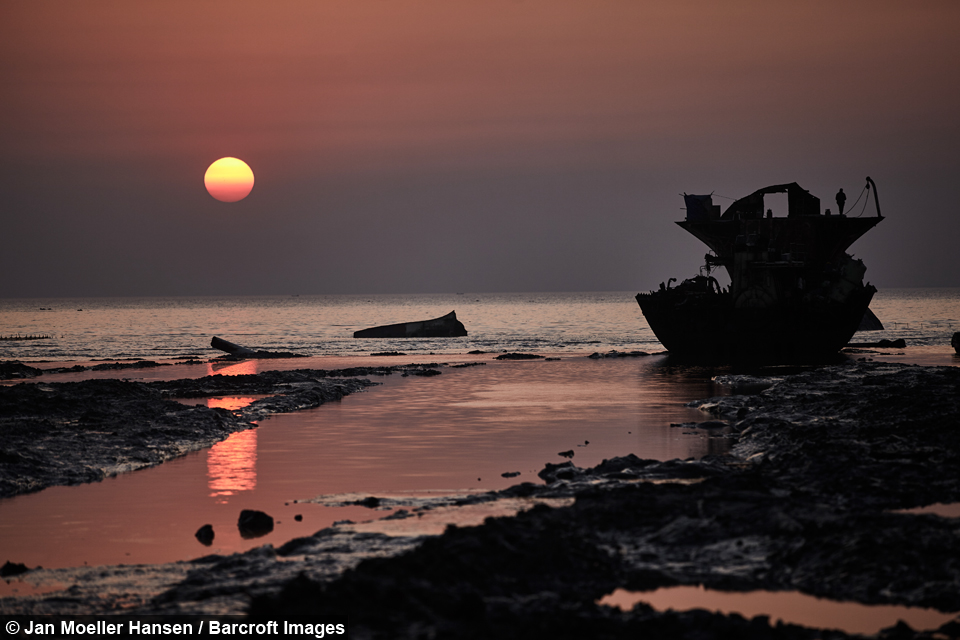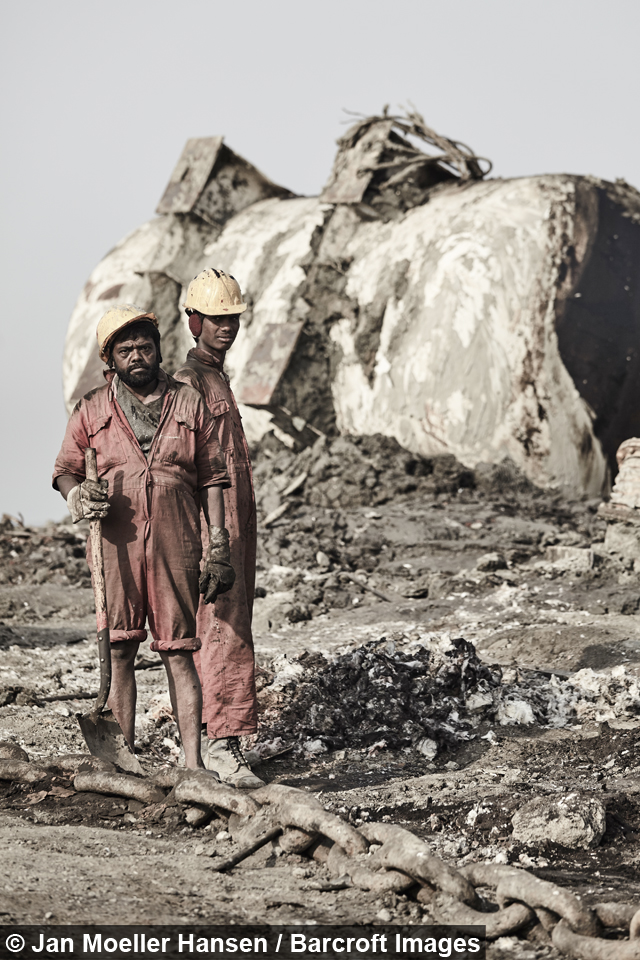The Dangerous ship breaking industry in Bangladesh
By Hannah Stevens @hannahshewans
Scroll down for the full story
The ship breaking industry began in the 1960s and 70s after a ship washed up on Sitakunda beach and was later sold for scrap, now Bangladesh is one of the world’s leaders in ship breaking.
After living in Dhaka, Bangladesh for five years, photographer Jan Møller Hansen flew to the port city of Chittagong to document the ship breaking industry.
He said: “Over the years, I had heard a lot about the ship breaking business in Bangladesh, but had never seen it myself.
“I had come across some fascinating photographs of the giants that were ripped apart by the tiny workers. It looked like something from a different world. Like small ants desecrating a large carcass.”
As yard owners and the Bangladeshi authorities want to avoid drawing undesirable attention, all visits are pre-arranged and strictly controlled. All the shipyards on Sitakund beach are also protected by high fences, surveillance and guards.
Every year, approximately 200 steel ships are stripped bare in one of the 100 shipyards littering the 15km shore. While workers typically earn $2-4 a day, the ships can exchange hands for millions of dollars.
Despite being accompanied by a local student and an NGO worker, Jan met many angry yard managers who did not want any photographic evidence taken of the devastating work conditions.
The Danish photographer said: “Occupational health and safety and environmental laws and legislation have been adopted in recent years, but bad governance, weak enforcement of laws and regulations and widespread corruption make it a lucrative business.”
Ships are driven into the yard using a captain who specialises in beaching before its liquids, including engine oil and firefighting chemicals, are emptied and sold on. Afterwards the ship is gutted and everything from toilet paper to machinery is recycled or sold on the neighbouring highway.
Once the ship is nothing more than a husk, workers scurry in to recycle all the steel using blow torches to strip away hunks of steel.
Between 300 and 500 workers can spend up to four months dismantling a single ship and there are more than 50,000 workers involved in ship breaking on Sitakunda beach.
Jan said: “Workers are often exposed to asbestos used for insulation in older ships and from paint containing lead, cadmium and arsenic. It is not rare that workers die by gas poisoning or explosions and fires.
“Old ships are imported without pre-cleaning or removal of toxic gases and dangerous materials. Sometimes gases explode and kill workers.
“It also happens that workers are crushed by tumbling or falling steel parts. Sometimes workers fall from the high sides of ships on which they are working without safety harnesses.”
Workers are mostly uneducated and have no choice but to endure the dangerous conditions and 12-14 hour work days.
While at the shipyard, Jan witnessed one part of a ship split in two while workers were atop it - he never found out if anyone was killed or injured in the incident.
Jan said: “The ship breaking beach in Sitakunda was as bad as I had imagined. The workers are not being treated well.
“Basic human rights are not being respected. There is no doubt about that. The working and living conditions of the workers are very problematic.
“I am not saying that ship breaking in Bangladesh has to be entirely abandoned. But the ship breaking industry has to be changed fundamentally.”
New policies and legislation have been introduced to improve environmental and occupational health and safety standards but the changes are yet to make a distinct impact.
Jan added: “Bad governance is still the order of the day and enforcement of policies and laws is often nonexistent.
“Politicians and decision makers have vested interests in the industry and corruption is widespread, making it difficult to enforce rules and regulations.”
